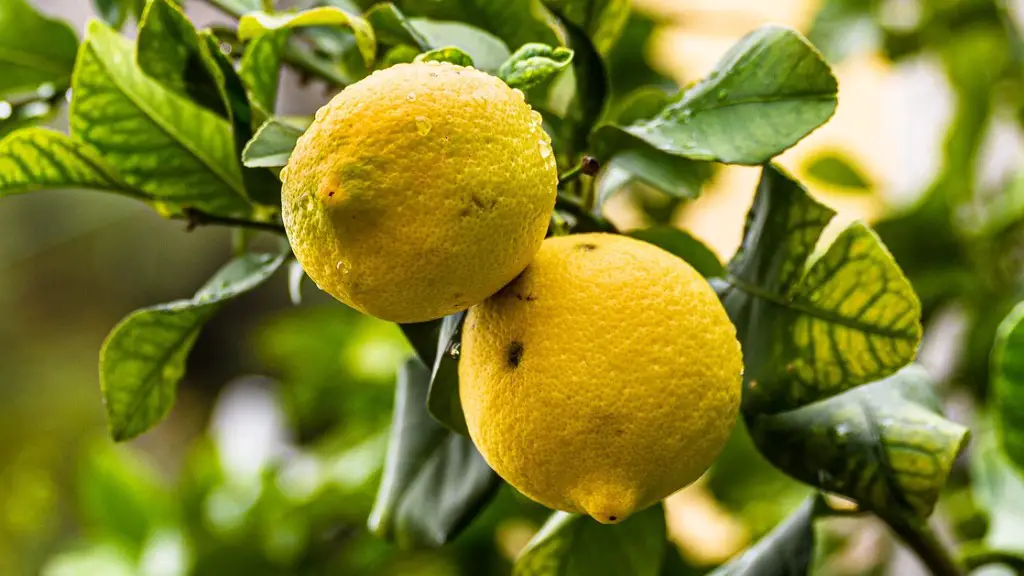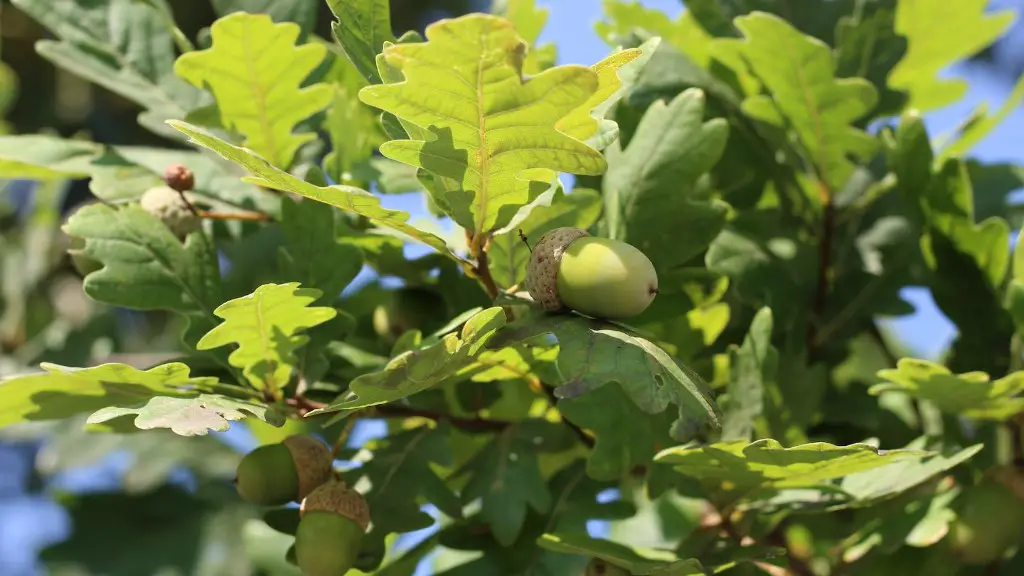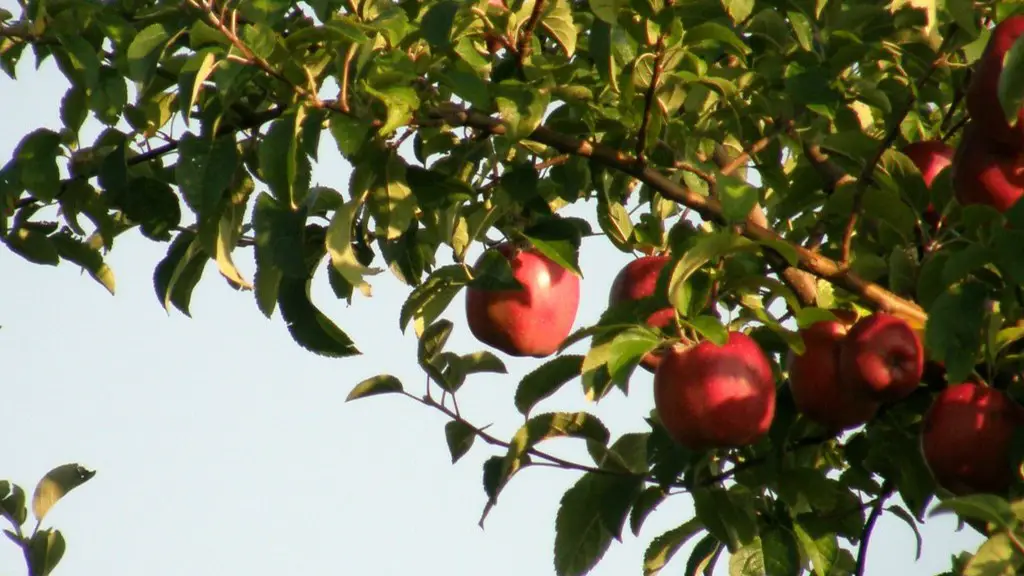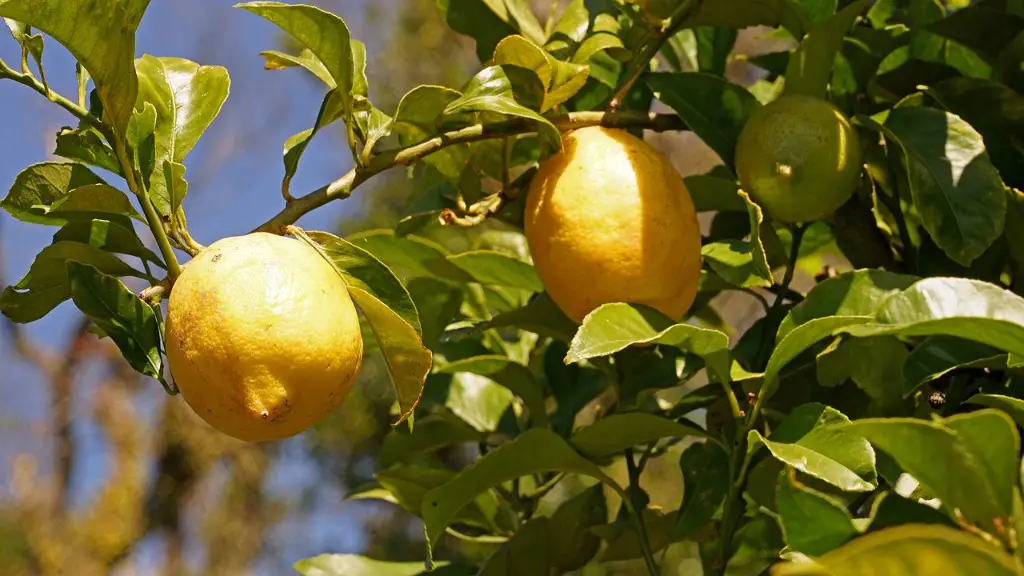Growing a lemon tree indoors from a seed is a fun and rewarding task – the results of which can be enjoyed for many years to come. Below are the steps you need to take to successfully grow a lemon tree indoors from a seed.
First and foremost, you’ll need a pot to plant the seed in. Pick one that’s big enough for the tree you’re looking to grow – you won’t want to upsize the pot once it’s rooted. You’ll also need to fill the pot halfway with moist potting soil, or a soil-less growing medium.
Using a spoon or a trowel, create a shallow groove in the soil, about half an inch deep. Place the seed in the groove and cover it with a thin layer of soil. Lightly spray the soil to keep it moist, but be careful not to overwater.
Within two weeks of planting the seed, a tiny shoot should emerge. Place the pot near a window, ensuring it receives at least eight hours of sunlight a day. Place the tree in a south-facing window if you can, as the tree will need lots of light to grow its fruit.
As the plant grows, prune it by pinching off the top leaves. This helps the plant focus its energy on developing strong roots and will result in a strong, healthy tree. After four to five months, you may see flowers emerging.
Seven to nine months after planting, depending on the variety of lemon tree, you may see tiny fruits. Pollination is important for these fruits to develop and mature, but can be difficult to achieve indoors. Purchase a cotton swab or small paintbrush and manually pollinate the flowers.
Your indoor lemon tree will take twelve months to a year to bear fruit, so be patient and enjoy watching your plant grow and produce. Once the fruit is ripe, you can store it indoors to extend its lifespan, or enjoy fresh lemon juice, lemon sorbet, or any other creative lemon-based treat you can come up with.
Lemon Trees Varieties
Lemon trees come in many varieties, so it’s important to research the one you’d like to grow before purchasing a seed. Common varieties include the Meyer Lemon, Tahiti Lemon, Eureka Lemon, Cambodian Lemon, and Texan Ponderosa Lemon. Depending on the variety you choose, you may need to adjust the potting, soil, or sunlight levels for best results.
Meyer Lemons are a popular choice for indoor lemon trees. Unlike most other lemon varieties, they are perfectly suited to indoor growing. They also don’t require lots of maintenance, and won’t grow too big, making them ideal for smaller spaces.
The Eureka Lemon, however, is believed to be one of the oldest varieties of lemon, originating from the Mediterranean region. It thrives in bright, sunny spots and needs slightly more space than Meyer lemons to grow. Eureka lemons are also more drought-resistant and therefore require less watering.
The Tahiti, Cambodian, and Texan Ponderosa lemons also bring variety to your lemon tree. All three thrive in sunny conditions, but they all differ in size, flavor, and textural of the fruit. The Tahiti lemon is much sweeter and less sour than the Eureka, and the Cambodian lemon is smaller in size but sweeter than the latter. The Texan Ponderosa is a large, vigorous producing tree, perfect for making lemonade.
No matter which variety of lemon tree you decide to grow, you should ensure the potting soil is well draining, and the tree has access to eight hours of sunlight daily. Be sure to prune the tree to promote strong root development, and manually pollinate the flowers to produce fruit.
How to care for a lemon tree
It’s not enough to simply plant the seed and hope for the best. Careful nurturing and attention to detail are required to grow a successful lemon tree indoors.
The most important factor to consider is the amount of water. You don’t want to let the soil dry out completely, nor should you overwater. When the topsoil feels dry, give the tree a slow, deep soaking and then leave it to sit for a few hours.
Nutrients are also important for the successful growth of a lemon tree. To maintain healthy growth, you should use an organic citrus fertilizer once a month. This will provide the tree with essential micronutrients that are important for healthy fruit development.
Pests can also be an issue for indoor lemon trees. Common infestations include aphids, mealybugs, spider mites, and scale insects. To prevent infestations, you should regularly inspect the leaves and buds and remove any unwanted guests with a cotton bud dipped in rubbing alcohol.
In addition to preventing infestations, spraying leaves with a citrus-safe insecticidal soap will help protect the leaves and encourage healthy growth. It’s also important to ensure the soil is kept moist and free from weeds, as these can compete with the tree for moisture and nutrients.
Lemon Tree Fruits
After you’ve taken all these essential steps to nurture the tree, you may soon be rewarded with clusters of juicy lemons.When harvesting lemons, use a pair of scissors or a sharp knife to cut the fruit from the branch. Hold the fruit and twist gently to break it off.
Once picked, lemons can be stored at room temperature or in the refrigerator. Ripe lemons will last for a few weeks on the countertop, or several weeks to a few months in the refrigerator.
You can also freeze lemons, provided they’re kept in an airtight container. However, frozen lemons will need to be thawed and should then be enjoyed within one week.
Lemons can easily be enjoyed fresh in salads, dressings and marinades, or frozen, juiced, sliced and dried. Lemons also lend themselves to a wide variety of sweet recipes, like lemon curd tarts and lemon bars.
Conclusion
Growing an indoor lemon tree from a seed can be a wonderful way to enjoy fresh, juicy lemons year-round. With the right care and attention, you can achieve great results. You’ll get to choose the type of lemon tree and flavor of the fruit, and reap the rewards of your hard work in the form of delicious and nutritious lemon treats.





